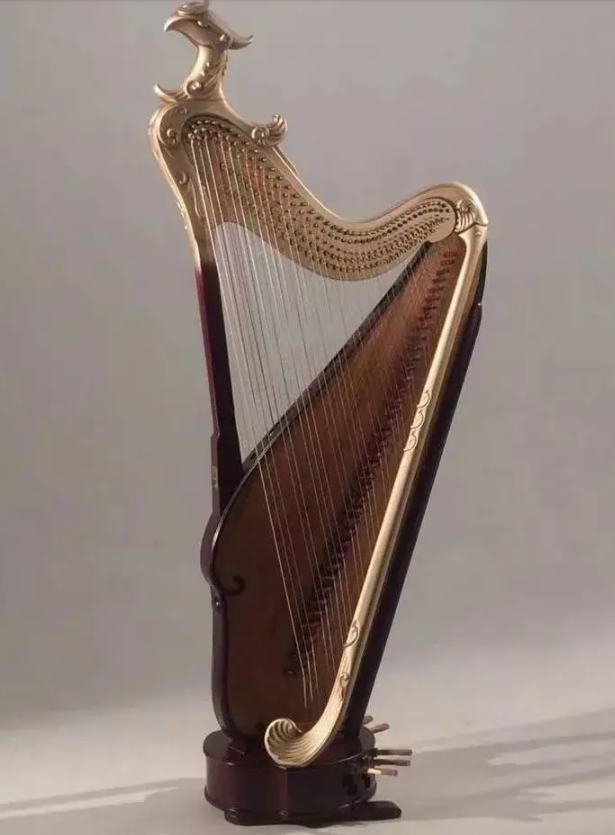The timbre characteristics of Konghou and its difference from harp
The technical differences between Konghou and harp are mainly: Konghou has more vibration techniques (guzheng), which brings more changes in flavor; it has double-row strings of the same degree on the left and right, which is more convenient for playing fast melodies and overtones, and can be used with both hands. Play the melody at the same time.

The Konghou is tuned in the key of C-flat on the twelve well-tempered heptatonic scale—although the heptatonic string span is larger, it may take slightly longer than the pentatonic string to play melodies with large pitch changes, and the maximum interval in one hand It is also smaller, not as smooth as the pentatonic string in expressing the pentatonic melody, but the pentatonic melody can be played directly with one hand on the pentatonic string, and the pentatonic scale must be played on the pentatonic string. The melody must have the cooperation of the left hand, which will greatly limit the agility. After all, there are more pentatonic melodies than pentatonic melodies.
In terms of sound range, the large professional Konghou exceeds six octaves, and even reaches seven octaves. However, the general Konghou is still five octaves.
Compare the timbre of the Konghou and the harp: the sound of the harp seems to be emitted from underwater, and the whole piece of water absorbs some scattered energy, which is relatively pure, soft and stable; the sound of the Konghou seems to be emitted from the transparent water, even The water surface was also shaking slightly, relatively clear, floating and erratic. Compare the timbre of Konghou and Guzheng: Guzheng is more mellow and distant, easier to integrate, and dissolves like the night of green water in a lotus pond; Konghou is clearer and more ethereal, more vivid, and Lingling is like the sound of snow-capped mountains and clear springs.
In terms of technique, Konghou is based on the harp, supplemented by the guzheng and other national musical instruments, and then developed.
 渝公网安备 50010702504639号
渝公网安备 50010702504639号